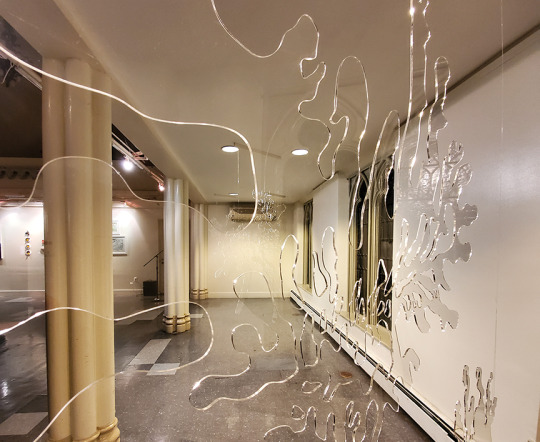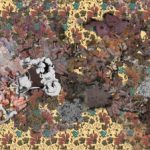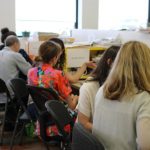Conversations | Zahra Banyamerian
“I want to fight the idea of the starving artist, as I believe no one should wait to be established or recognized to have a living wage.“
Zahra Banyamerian, Program Associate at NYFA Learning, is a curator from Iran who pursues independent curatorial projects in non-traditional venues. In addition to her experience as an arts administrator and her passion for contemporary art from the Middle East, she is trained as a painter and printmaker. Learn more from her career trajectory as an immigrant arts professional below.
NYFA: What are some of your strategies for curating exhibitions at non-traditional spaces?
Zahra Banyamerian: First, one should creatively think of a space to activate it to serve the purpose of exhibiting artworks. Second, one must think about the work and artists they would like to include in that non-traditional venue. The first and second steps are interchangeable. For example, when you have the space before finalizing the list of artists, you should think about whose work responds better within the space you have available; but if you have the list of artists and you know what kind of work you would like to have in your shows, you have to think about the space because, in the end, the space also adds another layer of meaning to the story you are telling within your show. For instance, when I had the opportunity to curate a show at The First Presbyterian Church in New York City, I checked the space and realized that I had a high ceiling, two enormous cream-colored walls (which I was unable to paint in another color) to install the work, and an almost separated long, narrow space attached to the Great Hall. This other space had a lower ceiling and large stained glass windows on one of its sides. I had other limitations as well: I couldn’t have sculptures and large installations since the church uses the space for meetings and gatherings. I decided to respect the space by choosing to have only 10-11 artists. Then, considering what I had, I went to look for the artists.
NYFA: Can you tell us what drives your curatorial practice process and if there is a thread that ties in all of your projects?
ZB: What ties my practice as a curator and researcher is my background and the fact that I have the experience of border crossing. I am an immigrant and I am from a geographical region called Iran; I stand on the margins of the world and, simultaneously, I resist the idea of being defined only by my movement through the world or only being recognized by prejudice toward where I came from. So when developing a project, my goal is to suggest another perspective that challenges the dominant narratives that define different communities.
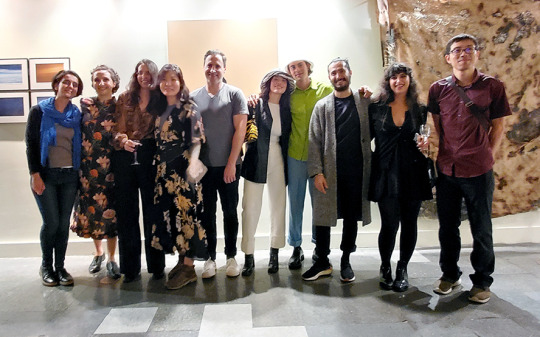
NYFA: What kind of collaborations and projects are you aspiring to at the moment?
ZB: At the moment, Gabriella Calandro, Senior Program Officer & Curator at NYFA Grants, and I are co-curating the NYFA staff show which will be open to the public from January 29 to May 30. The opening night is scheduled for February 20, from 6:00 PM – 8:00 PM. I’m also finishing up my thesis for my MA degree in Art History. I am researching the intersection of nostalgia, politics, and gender and how they play major roles in the artistic production of countries where drastic social changes were experienced in their recent history. I will present a part of my thesis in the 37th Annual Art History Graduate Symposium hosted by Florida State University in late March. At the same time, I find open calls and opportunities where I can work on new curatorial projects that I have in mind.
NYFA: Can you tell us about your experience being part of NYFA Learning?
ZB: Being part of NYFA Learning has been rewarding. I’ve gotten to know great colleagues who have supported me from day one. I learned that designing workshops, panels, and programs for artists is also, in a sense, a creative process, and one should be an innovative and think-out-of-the-box kind of person to empower artists across all disciplines. You have to be a researcher, entrepreneur, and a collaborator to get the job done. I learned how to be accessible and listen empathetically to solve problems. I also have a chance to work with many great artists whose words and work expanded my understanding of art. Being involved in providing professional development to artists and creatives to sustain their careers has also brought me a new perspective when looking at my practice, and I try to incorporate all strategies that the workshops presenters and panelists share with artists into my own work. Learning more about the challenges artists face taught me to be an advocate for their rights and push boundaries to do what is right for them. I’m looking for what else can be done, how we can alter the accepted dynamic of the art world, in which, for instance, giving low wages to artists or hiring unpaid interns is considered in some circles OK. I want to fight the idea of the starving artist, as I believe no one should wait to be established or recognized to have a living wage.
More About Zahra Banyamerian
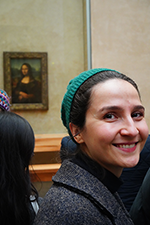
At NYFA, Banyamerian is involved with different aspects of programming for artists and creatives. She provides support for the NYFA Learning Team in various professional development programs, including entrepreneurial trainings, the Immigrant Artist Mentoring Program, Doctor’s Hours.
She also pursues independent curatorial projects in non-traditional venues. She is currently an MA candidate in the Art History program at the City College of New York where she is working on her master thesis on the intersection of nostalgia, politics, and gender in the cultural production of Iranian female artists. In addition to her experience as an art administrator and her passion for the Middle East contemporary art, she is trained as a painter and printmaker. She holds a BFA degree in Painting and a MA degree in Art Studies from University of Tehran and a Post-Bacc degree in Studio Art from the School of the Museum of Fine Arts, Boston.
– Interview Conducted by Alicia Ehni, Program Officer
This post is part of the ConEdison Immigrant Artist Program Newsletter #125. Subscribe to this free monthly e-mail for artist’s features, opportunities, and events. Learn more about NYFA Immigrant Artist Mentoring Program.
Images: Mrinalini Aggarwal, Lapse (Willing), 2015, installed at Great Hall, The First Presbyterian Church, New York City, during the “Status” exhibition; Team of artists who were part of “Status,” from left to right: Nazanin Noroozi, Zahra Banyamerian, Yael Ben-Simon, Kate Bae, Vincent Bezuidenhout, Ziyu He, Diego Anaya, Mrinalini Aggarwal, and Chemin Hsiao (not pictured: Luisa Valderrama, Masahito Ono, and Htet San); and Zahra Banyamerian. All images credit Mohammad Askarzadeh.


